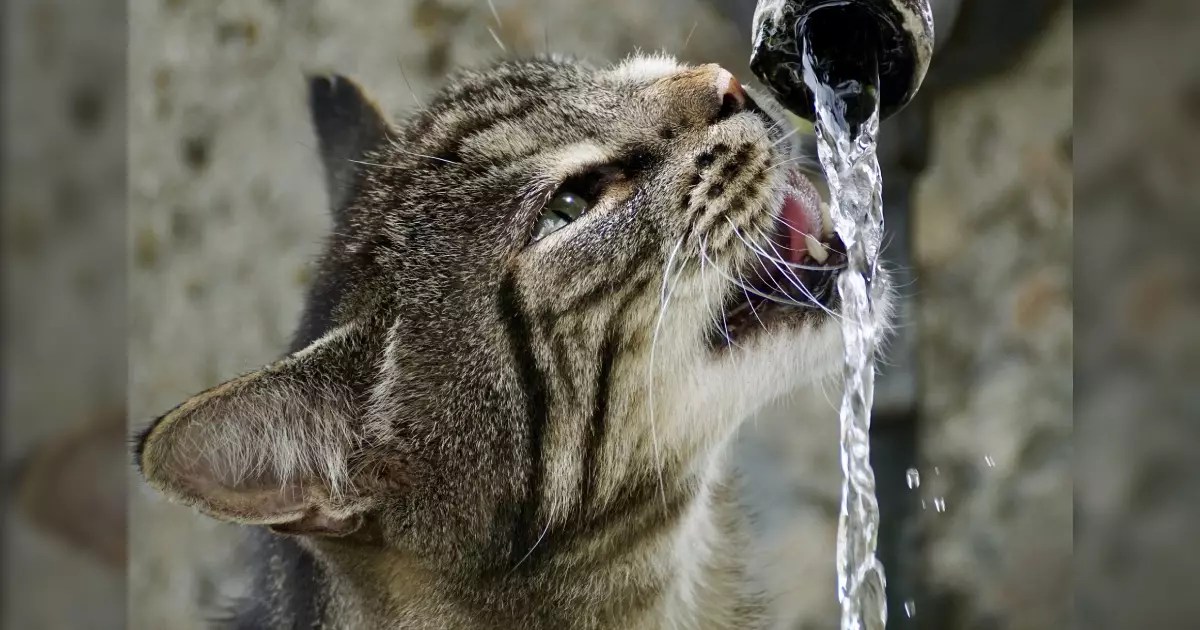For many cat owners, the joys of a hydrated feline are often overshadowed by the less glamorous realities of their water upkeep. One common yet overlooked issue is the persistent formation of slime within water bowls and fountains. Although it might seem trivial, this slimy buildup can significantly impact a cat’s willingness to drink, ultimately affecting their health. While some owners remain oblivious to the problem, others find themselves frustrated at a seemingly simple task—cleaning—becoming a never-ending battle against microbial build-up. The truth is, the presence of slime isn’t just an unsightly annoyance; it’s a sign that internal components are neglected, providing a breeding ground for bacteria and mold. An effective strategy to combat this issue is not merely cleaning once in a while but establishing a dedicated routine that ensures water remains fresh, appealing, and safe for your feline friend.
Understanding the Root Causes of Water Slime and How to Tackle Them
The formation of slime is primarily caused by biofilms—layers of bacteria and algae that cling stubbornly to the surfaces of fountains, pumps, and bowls. These biofilms thrive in stagnant water where organic debris gathers, creating the perfect environment for microbial growth. Cats, naturally drawn to moving water, may initially favor their fountain, but once slime appears, their interest wanes. Consequently, the fountain becomes a neglected, unappealing water source. To prevent this, diligent maintenance is essential. Regular disassembly of the pump and thorough cleaning with hot water and mild dish detergent disrupts the biofilm’s life cycle. Supplementing this practice with a vinegar solution, which is effective at dissolving mineral deposits and microbial residue, can prove invaluable. The key is consistency—aim for a bi-weekly or monthly deep clean, rather than waiting for visible slime to appear. This proactive approach not only maintains hygiene but ensures your feline remains motivated to hydrate.
The Art of Disassembly and Deep Cleaning: Beyond Routine Wiping
Many pet owners underestimate the complexity of cleaning their cat water fountain. It’s not enough to merely rinse it out; the internal components, especially pumps, require meticulous attention. The pump’s small parts, like the propeller and tubing, often harbor the most grime. Disassembly involves carefully removing these parts, which can be a delicate process, especially when the buildup has hardened. Using precision tools such as tweezers and small brushes designed for cleaning electronics or aquariums helps reach into tiny crevices. Once separated, soak the parts in warm soapy water to loosen dirt, and then scrub thoroughly. Pay special care to the narrow tubes where mineral deposits and slime linger, impeding water flow. After cleaning, a final rinse with clean water ensures no residual soap or vinegar remains. Reassembling the pump correctly guarantees optimal performance. This labor-intensive process might seem daunting initially, but it’s the secret to maintaining an effective, bacteria-free fountain that keeps your furry friend happily hydrated and healthy.
Transforming Maintenance into a Ritual: A Catalyst for Better Pet Care
While the technical aspects of cleaning are critical, embracing routine and ritual transforms this chore from a dreaded task into an essential part of your pet care regimen. Establishing regular cleaning intervals—a set day every week or two—integrates maintenance seamlessly into your schedule. Furthermore, turning on visual aids, like instructional videos, can demystify each step, boosting confidence in handling the intricate parts of your fountain. Beyond technical cleaning, ensure you are providing fresh water daily and changing filters according to manufacturer recommendations. Remember, a well-maintained water fountain isn’t just about hygiene; it’s an invitation for your feline to indulge in proper hydration, which impacts everything from coat health to kidney function. By investing effort into the upkeep of your pet’s water source, you demonstrate a level of mindfulness that conveys your commitment to their well-being, ultimately fostering trust and happiness between you and your beloved companion.

